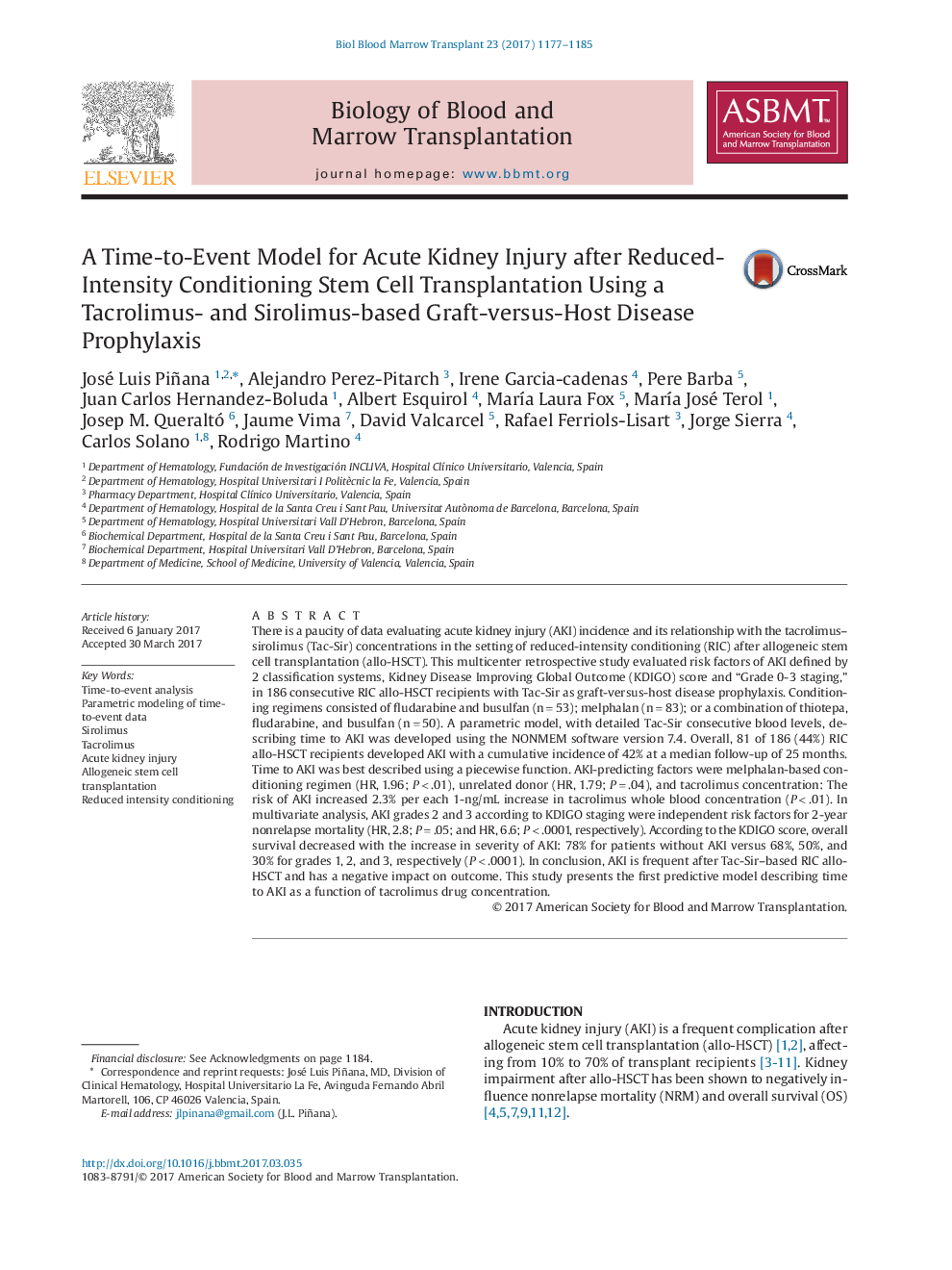| کد مقاله | کد نشریه | سال انتشار | مقاله انگلیسی | نسخه تمام متن |
|---|---|---|---|---|
| 5524356 | 1546239 | 2017 | 9 صفحه PDF | دانلود رایگان |
- AKI is frequent in the context of sirolimus- and tacrolimus-based GVHD prophylaxis after RIC allo-HSCT.
- The new KDIGO classification system to define AKI appears to be useful in predicting outcome and should be prospectively explored in the allo-HSCT setting.
- Parametric longitudinal and time-to-event data analysis allowed us to identify the association of tacrolimus exposure and the development of AKI in RIC allo-HSCT.
- This study presents the first predictive model describing time to AKI as a function of tacrolimus drug concentration.
There is a paucity of data evaluating acute kidney injury (AKI) incidence and its relationship with the tacrolimus-sirolimus (Tac-Sir) concentrations in the setting of reduced-intensity conditioning (RIC) after allogeneic stem cell transplantation (allo-HSCT). This multicenter retrospective study evaluated risk factors of AKI defined by 2 classification systems, Kidney Disease Improving Global Outcome (KDIGO) score and “Grade 0-3 staging,” in 186 consecutive RIC allo-HSCT recipients with Tac-Sir as graft-versus-host disease prophylaxis. Conditioning regimens consisted of fludarabine and busulfan (nâ=â53); melphalan (nâ=â83); or a combination of thiotepa, fludarabine, and busulfan (nâ=â50). A parametric model, with detailed Tac-Sir consecutive blood levels, describing time to AKI was developed using the NONMEM software version 7.4. Overall, 81 of 186 (44%) RIC allo-HSCT recipients developed AKI with a cumulative incidence of 42% at a median follow-up of 25 months. Time to AKI was best described using a piecewise function. AKI-predicting factors were melphalan-based conditioning regimen (HR,â1.96; Pâ<â.01), unrelated donor (HR, 1.79; Pâ=â.04), and tacrolimus concentration: The risk of AKI increased 2.3% per each 1-ng/mL increase in tacrolimus whole blood concentration (Pâ<â.01). In multivariate analysis, AKI grades 2 and 3 according to KDIGO staging were independent risk factors for 2-year nonrelapse mortality (HR, 2.8; Pâ=â.05; and HR, 6.6; Pâ<â.0001, respectively). According to the KDIGO score, overall survival decreased with the increase in severity of AKI: 78% for patients without AKI versus 68%, 50%, and 30% for grades 1, 2, and 3, respectively (Pâ<â.0001). In conclusion, AKI is frequent after Tac-Sir-based RIC allo-HSCT and has a negative impact on outcome. This study presents the first predictive model describing time to AKI as a function of tacrolimus drug concentration.
Journal: Biology of Blood and Marrow Transplantation - Volume 23, Issue 7, July 2017, Pages 1177-1185
